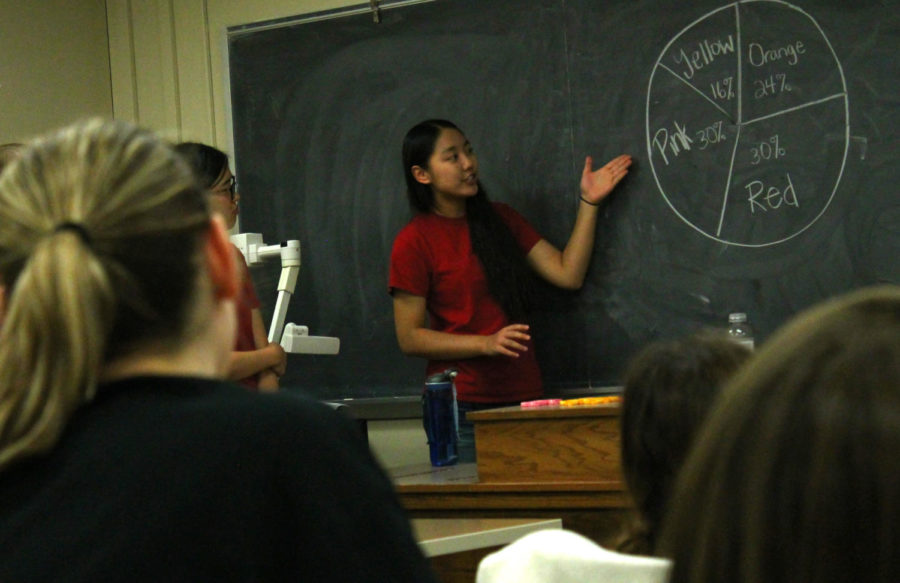New learning communities help international and first-year students
Jackie Norman/ Iowa State Daily
The Math and Statistics Learning Community exampled different ways to represent the data they had collected on which starburst color the girls like the best. Science Explorations is a club that teaches girls in third to sixth grade about the STEM fields.
September 4, 2017
Three new learning communities, Agriculture Exploration, Global Design Connection and Communication Studies have been added at Iowa State this year.
Learning communities have been at Iowa State since 1995, and as of last year, 73 percent of all first year students were involved in a learning community.
There are a total of 90 learning communities this year that, with the collaboration of faculty coordinators, peer mentors and the learning community office, encompass a variety of interests and majors for students.
Jen Leptien, interim director for learning communities, said the new learning communities were added after seeing a need in those areas.
The Agriculture Exploration learning community, headed by Assistant Dean of Life Sciences Howard Tyler, serves students figuring out where they best fit in the College of Agriculture, Leptien said.
The Communication Studies learning community is advised by Sabrina Shields-Cook, a former adviser for the College of Engineering learning community.
“She [Shields-Cook] knew the benefits and the great things that were happening with that learning community that she worked with [previously], and so when she came to communication studies she said, ‘This would be a really awesome opportunity to connect students and network them,’” Leptien said.
With a growth of international students in the College of Design and difficulties with their adjustment to the design community, the Global Design Connection learning community was created to resolve this issue.
The College of Design enrolled 300 international students in the fall of 2016. This almost doubles the number of international students enrolled in the fall of 2010.
“We really thought this would be the best way to go with what we wanted to accomplish which is really, as the title suggests, a way that international students, domestic students, faculty and staff in the College of Design spend time together,” Hogan said.
All of the learning communities are ways for students to spend time with classmates in their major, take classes together and have people to go to with academic questions.
Each learning community is equipped with a peer mentor, someone who made it through their freshman year and, therefore, is able to answer questions for the next generation of students in their program.
There are over 600 peer mentors in the learning community program. The peer mentors are undergraduate students who have been successful in the area of their learning community.
“Peer mentors are where my heart is,” Leptien said. “One of the pieces that really rings home to me is the importance of being able to communicate peer to peer.”
Because of learning communities, student retention rates have increased, Leptien said.
The retention rate for learning community students over the lifespan of the program, Leptien said, is 8 percent higher than non-learning community students.
One of the main goals of learning communities is to make adjusting to college as easy as possible for freshmen and transfer students. Not only do peer mentors help with that, but so do their fellow learning community classmates.
Leptien says that two major things most kids are worried about going into college are making it through college level classes and making friends.
“We’re creating this community of learners that will be getting together on a regular basis to develop those friendships and form study groups.” Leptien said.







